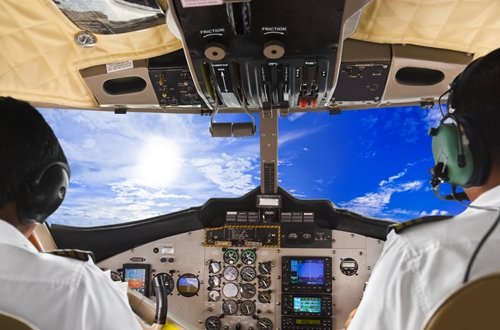US Air Force embraces avatars made from 3D laser scanning technology

Creating digital models of real people can be a big challenge for video game designers, but using scans from existing individuals can be an effective solution to this issue. The accurate reproduction of a person's physical motions, facial expressions and gait can be difficult to replicate in a digital environment if developers and technical professionals don't have precise data informing their creations. This is why digital modelers are increasingly turning to 3D laser scanning. Laser scanners and 3D modeling software gives video game developers the data they need to develop realistic avatars for video games and other types of simulation tools.
The technology is becoming so popular that even the U.S. Air Force is turning to the tools to help it create avatars for digital training exercises. While the Air Force is using various types of technology to create these online representations of real people, 3D laser scanning and modeling tools are being used by video game developers to immerse players into the world they have created.
Nailing down realistic movements
According to Ohio-based Dayton Daily News, the Air Force decided to utilize 3D laser scanners to document various movements and scenarios that real pilots would encounter when they are in the air. Technicians scanned the movements of people falling or doing other movements so they can realistically create digital simulations for military personnel during their training. Since the development of avatars is such a complex process, many of the people involved in the project had to repeat their motions over and over again.
Max Grattan, a research technician at the Air Force Research Laboratory at Wright-Patterson Air Force Base, was involved in the gathering of data sets for the development of the avatars. Grattan was one of the people used to model the various scenarios, from carrying an AK-47 rifle to falling and crashing to the ground. Yet Grattan wasn't the only person asked to mimic real movement for the development of avatars – the news source reported people from multiple regions of the country were involved in the project to add the dimension that each avatar is a unique individual. From talking on a cellphone to hiding dangerous materials under clothing, the project aims to scan as much information as possible to help train pilots and other military personnel to identify various dangers.
"What we were giving them was a sense of realism that [pilots] can pick up from 20,000 feet," said Isiah Davenport, a creative director who worked on the project. "What we try to do is get a variety of people from a variety of places around the world and the United States to capture cultural cues."
Realistic avatars may be unsettling to some, as seeing accurate facial expressions on a digital model can seem to be strange. According to Motherboard, an online resource for video gamers, 3D laser scanning and modeling technology can help developers create avatars that are so real they are almost eerily life-like. Yet these avatars tend to be more successful and less creepy than those created from photographs, the source noted. Meaning that people would rather interact with a digital doppleganger or a more humanoid model than with those that seem realistic but are slightly off.
For Air Force pilots, using realistic avatars rather than ones that are only slightly based on true people can be beneficial for training purposes. Military personnel – and video game users, as well – may be less apt to be distracted by the fact that they are working with a simulation than if avatars weren't created using precise data sets.
Video game development: Learn how SGM help you put the real world into your video game with our 3D laser imaging solutions.
